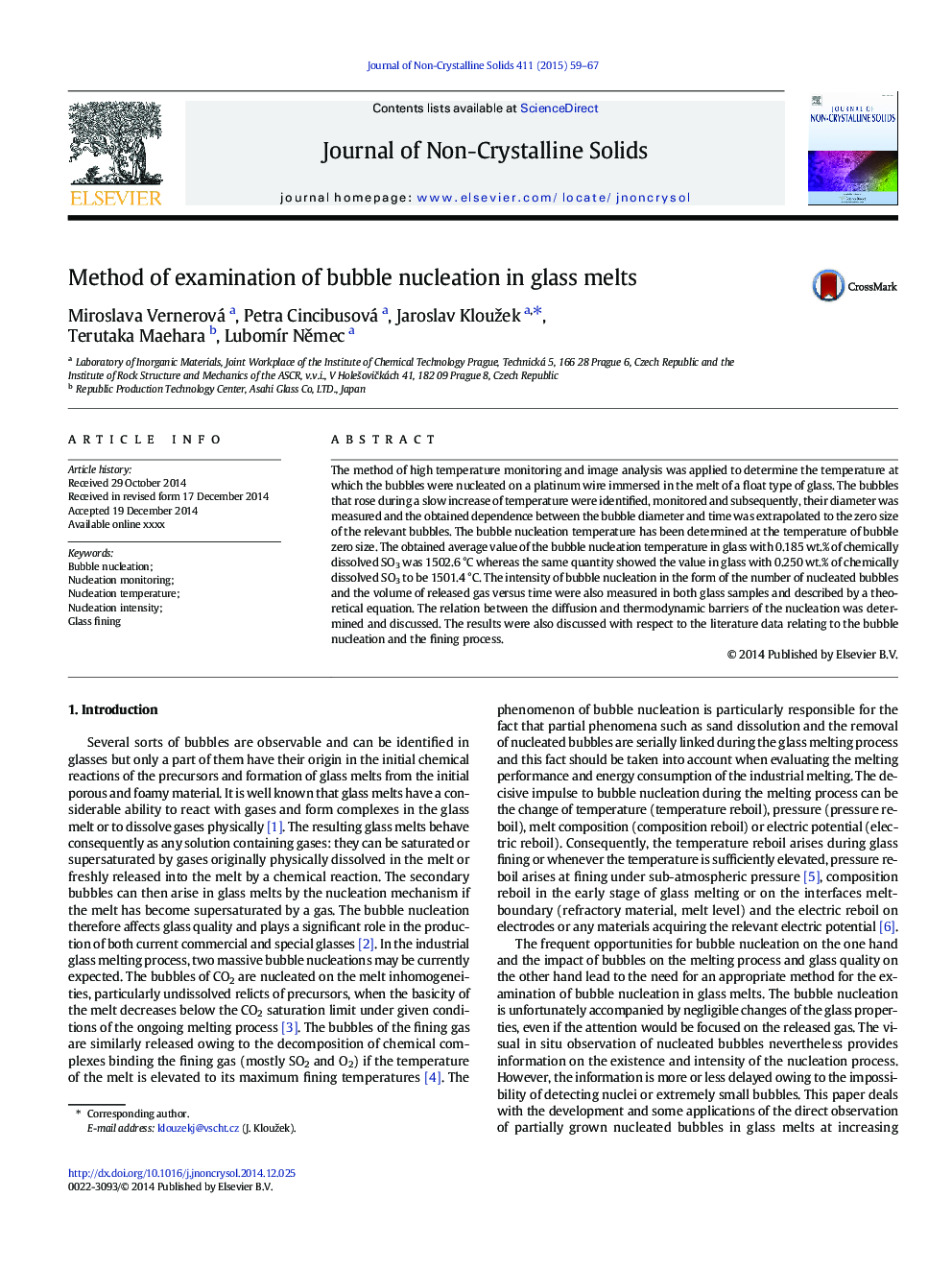| Article ID | Journal | Published Year | Pages | File Type |
|---|---|---|---|---|
| 7901120 | Journal of Non-Crystalline Solids | 2015 | 9 Pages |
Abstract
The method of high temperature monitoring and image analysis was applied to determine the temperature at which the bubbles were nucleated on a platinum wire immersed in the melt of a float type of glass. The bubbles that rose during a slow increase of temperature were identified, monitored and subsequently, their diameter was measured and the obtained dependence between the bubble diameter and time was extrapolated to the zero size of the relevant bubbles. The bubble nucleation temperature has been determined at the temperature of bubble zero size. The obtained average value of the bubble nucleation temperature in glass with 0.185 wt.% of chemically dissolved SO3 was 1502.6 °C whereas the same quantity showed the value in glass with 0.250 wt.% of chemically dissolved SO3 to be 1501.4 °C. The intensity of bubble nucleation in the form of the number of nucleated bubbles and the volume of released gas versus time were also measured in both glass samples and described by a theoretical equation. The relation between the diffusion and thermodynamic barriers of the nucleation was determined and discussed. The results were also discussed with respect to the literature data relating to the bubble nucleation and the fining process.
Related Topics
Physical Sciences and Engineering
Materials Science
Ceramics and Composites
Authors
Miroslava Vernerová, Petra Cincibusová, Jaroslav Kloužek, Terutaka Maehara, LubomÃr NÄmec,
